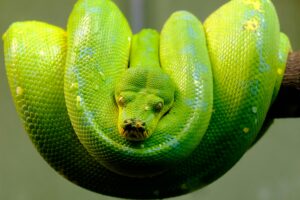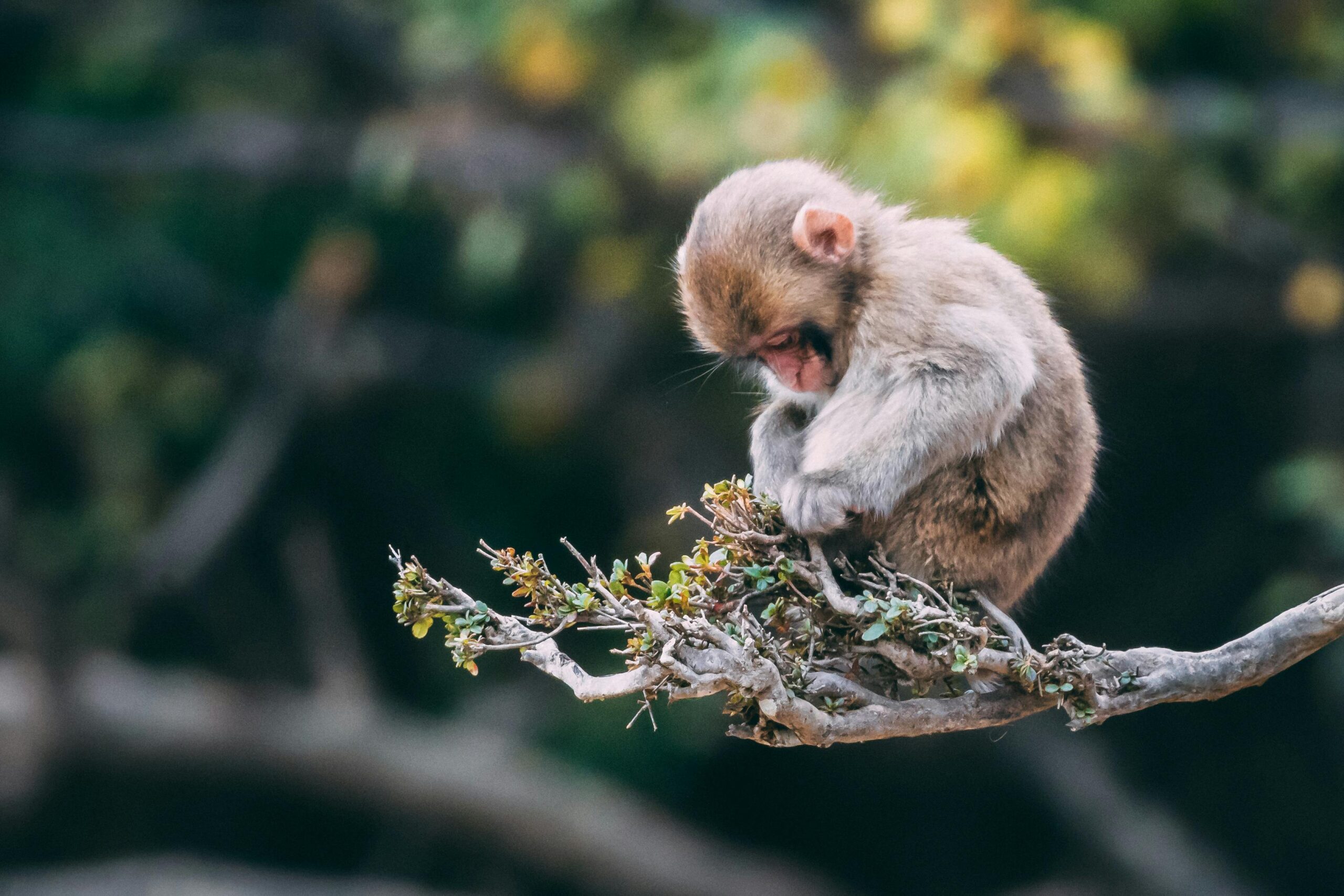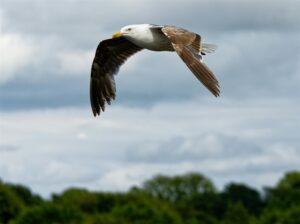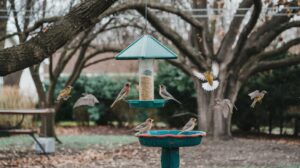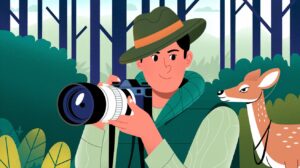Welcome to the exciting world of wildlife photography! As a photography enthusiast or a professional wildlife photographer, capturing stunning photos of animals in their natural habitats can be a truly rewarding experience. In this comprehensive guide, I will share essential tips and techniques to help you enhance your wildlife photography skills and create memorable images that connect with viewers.
Whether you are passionate about capturing the magnificence of wildcats, the gracefulness of birds in flight, or the intricate details of insects, nature photography offers endless opportunities for creativity and storytelling. By understanding the nuances of animal behavior, mastering photography techniques, and selecting the right gear, you can capture breathtaking wildlife images that evoke emotions and tell powerful stories.
Throughout this guide, I will provide you with valuable insights and practical advice to improve your wildlife photography. From the basics of wildlife photography to tips for photographing specific wildlife species, you will learn how to capture compelling images that showcase the beauty and diversity of our natural world. We will also explore the importance of ethics and conservation in wildlife photography, as well as post-processing techniques to enhance your images while maintaining their authenticity.
So, grab your camera and join me in this exciting journey to master the art of wildlife photography. Let’s dive in and discover the techniques and tips that will take your wildlife photography to new heights!
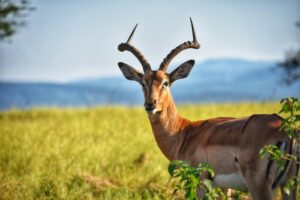
Key Takeaways:
- Understand animal behavior to anticipate and capture the perfect shot.
- Choose the right gear that suits different animal habitats and shooting conditions.
- Master photography techniques like composition, lighting, and patience.
- Learn specific tips for photographing different wildlife species.
- Post-process your wildlife images to enhance their visual impact.
Understand Animal Behavior to Get the Perfect Shot
When it comes to wildlife photography, understanding animal behavior is key to capturing the perfect shot. By observing and anticipating their actions, you can create captivating images that truly showcase the essence of the animal in its natural habitat. Here are some photography tips to help you master the art of capturing wildlife moments:
1. Patience is a Virtue
Wild animals can be unpredictable, so patience is essential. Settling in a spot and waiting for the perfect moment can lead to incredible opportunities to capture unique behavior or interactions. Remember, wildlife photography is a marathon, not a sprint.
2. Research is Essential
Before embarking on your wildlife photography adventure, conduct thorough research about the animals you plan to photograph. Understand their habits, movements, and habitats. This knowledge will help you anticipate their behavior and increase your chances of capturing captivating images.
3. Be Mindful of Your Surroundings
When photographing wildlife, it’s crucial to blend into your surroundings and avoid disturbing the animals or their habitat. Stay quiet, move slowly, and use camouflage if necessary. By being inconspicuous, you can capture natural and authentic moments without causing any harm.
4. Capture Authentic Moments
Avoid interfering with the animals or manipulating their behavior for the sake of a better shot. Instead, focus on capturing authentic moments that showcase their natural behavior and interactions. These genuine moments will create powerful and compelling wildlife images.
“To understand and capture animal behavior through photography is to connect with nature and tell their stories through your lens.” – [insert real photographer name]
5. Adapt and Adjust
As wildlife photographers, we must adapt quickly to changing conditions. Be prepared to adjust your camera settings on the fly and switch lenses when needed. The ability to react swiftly to unexpected moments will allow you to capture those split-second shots that make all the difference.
Remember, understanding animal behavior is an ongoing process. The more you immerse yourself in the world of wildlife, the better you will become at anticipating their actions and capturing remarkable images. So be patient, do your research, and immerse yourself in the beauty of wildlife photography.
| Wildlife Photography Tips: Understanding Animal Behavior | |
|---|---|
| 1. Patience is essential for capturing the perfect shot. | |
| 2. Conduct thorough research about the animals you plan to photograph. | |
| 3. Be mindful of your surroundings and avoid disturbing the animals. | |
| 4. Capture authentic moments that showcase natural behavior. | |
| 5. Adapt quickly to changing conditions and be prepared to adjust. |
Choose the Right Gear for Wildlife Photography
Having the right gear is crucial for capturing stunning wildlife photos in their natural habitats. As a wildlife photographer, you need to carefully select the appropriate camera, lenses, and other equipment that will enable you to effectively capture the beauty and essence of the wildlife. Here are some essential tips to help you choose the right gear for your wildlife photography:
Camera Selection:
- Consider a digital single-lens reflex (DSLR) camera or mirrorless camera for their versatility and superior image quality.
- Choose a camera with a fast autofocus system to quickly capture wildlife in action.
- Ensure the camera has a high burst rate to capture multiple frames per second for fast-moving subjects.
- Look for cameras with good noise performance at higher ISO levels, as wildlife photography often requires shooting in low-light conditions.
Lens Options:
- Invest in a telephoto lens with a long focal length, such as a 300mm, 400mm, or 500mm lens, to bring distant wildlife closer and capture details.
- Consider a telephoto zoom lens, like a 70-200mm or 100-400mm, for more versatility in capturing various compositions and distances.
- Explore the use of wide-angle lenses to capture the wildlife in its environment and create a sense of context.
Additional Equipment:
- Use a sturdy tripod or monopod to stabilize your camera during long shooting sessions, ensuring sharp and blur-free images.
- Carry extra memory cards and batteries to avoid missing out on crucial wildlife moments.
- Consider investing in camouflage clothing or a lens cover to blend in with the natural surroundings and avoid startling the wildlife.
Remember, the choice of gear ultimately depends on the type of wildlife photography you plan to pursue and the specific challenges you may encounter in different habitats and conditions. It may be beneficial to consult with experienced wildlife photographers or visit photography equipment stores to get hands-on experience with different gear before making a final decision.
Master the Techniques of Wildlife Photography
Now that you have a solid understanding of the basics of wildlife photography, it’s time to take your skills to the next level. In this section, I will share some valuable techniques that will help you capture breathtaking wildlife images that tell a story and evoke emotions. These techniques will enhance your composition, lighting, and patience, giving you the ability to create memorable photographs in the world of wildlife photography.
1. Composition:
Composition plays a crucial role in wildlife photography. Consider the rule of thirds, leading lines, and framing techniques to create visually engaging and balanced images. Experiment with different angles and perspectives to capture the uniqueness of your subjects. Remember, a well-composed photograph can instantly grab the viewer’s attention and make a lasting impression.
2. Lighting:
Understanding and utilizing light effectively is essential in wildlife photography. Take advantage of the golden hour—the hours around sunrise and sunset—when the light is soft and warm. Harsh midday sun can create harsh shadows and highlights, so try to avoid shooting during this time. Furthermore, be aware of how light interacts with your subject, highlighting its features and adding depth to your photographs.
3. Patience:
Patience is a virtue in wildlife photography. Animals seldom conform to our schedules, so be prepared to wait for the perfect moment. Observe your subjects and anticipate their behavior to capture those unique expressions, interactions, and actions. Stay still and blend into the surroundings to avoid disrupting their natural behavior. Remember, a patient photographer is often rewarded with extraordinary shots.
“Patience is the key to capturing truly remarkable wildlife photographs. Take the time to understand your subjects, observe their behavior, and wait for that perfect moment that tells a story.” – Wildlife Photographer Joe Smith
By mastering composition, lighting, and patience, you’ll be well on your way to becoming a skilled wildlife photographer. These techniques will allow you to create stunning images that showcase the beauty and diversity of the natural world. So grab your gear, head out into the wilderness, and let your creativity soar as you capture captivating moments in nature.
Tips for Photographing Specific Wildlife Species
Different wildlife species present unique challenges and opportunities for photographers. In this section, I will provide tips and insights for photographing specific animals, from birds and mammals to reptiles and insects. Discover techniques for capturing the behavior and distinct features of different wildlife species.
1. Birds
When photographing birds, it’s important to have a fast shutter speed to freeze their rapid movements. Use a telephoto lens to capture detailed shots from a distance. Patience is key, as birds can be elusive and easily disturbed.
“Bird photography is a rewarding experience that requires both technical skill and a deep understanding of avian behavior.” – John Smith, Professional Wildlife Photographer
2. Mammals
For photographing mammals, choose a longer focal length to get close-up shots without disturbing the animals. Research their behavior and habitats to anticipate their movements. Capture their natural interactions and expressions to tell a captivating story.
3. Reptiles and Amphibians
When photographing reptiles and amphibians, it’s important to be mindful of their habitats and not disturb them. Use a macro lens to capture their intricate details. Look for fascinating patterns and textures, and experiment with different angles to create visually striking images.
4. Insects
When capturing images of insects, macro photography is essential to showcase their small size and intricate details. Use a macro lens and a narrow aperture to achieve a greater depth of field. Be patient and observant, as insects can be quick and easily startled.
5. Underwater Wildlife
Photographing underwater wildlife requires specialized equipment such as underwater housings and strobes. Research the specific behavior of marine species and understand their habitats. Focus on capturing vibrant colors, unique movements, and interactions between different marine creatures.
By employing these tips, you can overcome the challenges and capture stunning wildlife images of specific animal species. Remember to respect wildlife habitats, maintain a safe distance, and prioritize the well-being of the animals in your photography pursuits.
The Art of Wildlife Photo Editing
When it comes to wildlife photography, capturing stunning images in the field is only half the journey. The art of post-processing, specifically photo editing, plays a crucial role in enhancing your wildlife images and bringing out their true potential. In this section, we will explore the importance of post-processing in wildlife photography and provide you with valuable tips and techniques to take your wildlife images to the next level.
The Importance of Post-Processing in Wildlife Photography
Post-processing is the process of editing and enhancing your wildlife images using specialized software such as Adobe Lightroom or Photoshop. It allows you to refine the colors, contrast, and details of your photographs, bringing them closer to the actual scene and helping you create visually captivating wildlife photo galleries.
“The aim of post-processing is not to manipulate the image beyond recognition but to present the subject in the best possible way while maintaining its authenticity.”
Wildlife photography often involves challenging lighting conditions, such as low light or high contrast situations. Post-processing can help you balance the exposure, recover details in shadows and highlights, and correct any color casts present in your images. It allows you to create images that accurately reflect the beauty and atmosphere of the natural world.
Editing Techniques for Wildlife Photography
When editing wildlife images, it’s essential to focus on enhancing the natural elements of the photograph rather than drastically altering its content. Here are some key techniques to consider:
- Color Correction: Adjust the white balance and color saturation to accurately represent the colors of the wildlife and its surroundings. This can bring a sense of life and vibrancy to your images.
- Contrast and Clarity: Enhance the contrast and clarity of the image to bring out the textures and details of the wildlife. This can help create a more impactful and engaging photograph.
- Sharpening: Apply selective sharpening techniques to bring out the fine details of the wildlife without introducing artifacts or noise. This can make your subject stand out and give the image a more polished look.
- Cropping and Composition: Use cropping to improve the composition and remove distractions from the frame. This can help draw attention to the wildlife and create a more pleasing visual arrangement.
Software for Wildlife Photo Editing
There are several software options available for wildlife photo editing, but Adobe Lightroom and Photoshop are widely recognized as industry-standard tools. Lightroom offers a user-friendly interface and powerful editing capabilities specifically tailored for photographers. Photoshop, on the other hand, provides more advanced editing features and allows for extensive retouching and manipulation if needed.
Both Lightroom and Photoshop can be used individually or in combination to achieve the desired results for your wildlife images. Experiment with different editing techniques and find a workflow that suits your style and enhances the unique qualities of your wildlife photography.
Remember, the goal of post-processing in wildlife photography is to refine your images while maintaining their authenticity. Develop your editing skills over time and use them as a means to truly showcase the beauty of nature and the incredible wildlife you have the privilege to capture through your lens.
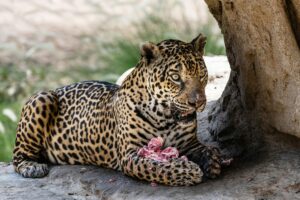
Ethics and Conservation in Wildlife Photography
As wildlife photographers, we have a unique opportunity to capture the beauty of nature and the animals that inhabit it. However, it is important to remember that with this privilege comes a great responsibility to prioritize ethics and conservation in our photography practices.
Respecting animal habitats is paramount. As photographers, we must be mindful of our impact on the environment and take steps to minimize any disturbance caused by our presence. This includes refraining from getting too close to wildlife, using telephoto lenses to maintain a safe distance, and avoiding any actions that may disrupt their natural behavior.
Following ethical guidelines is crucial in wildlife photography. We should never compromise the well-being of animals for the sake of a photograph. This means refraining from baiting or luring animals, interfering with their natural routines, or placing their lives at risk in any way. Respecting the boundaries set by wildlife reserves and national parks is also essential to ensure the continued protection of these animals and their habitats.
Our photography has the power to raise awareness and promote conservation efforts. By capturing captivating images of wildlife in their natural habitats, we can inspire others to appreciate and protect these fragile ecosystems. Sharing our work through exhibitions, publications, and online platforms helps to educate and engage people in conservation initiatives.
“The wildlife and its habitat cannot speak, so we must and we will.” – Theodore Roosevelt
By adhering to ethical standards and actively participating in conservation efforts, we can use our photography as a powerful tool for change. Let’s capture the beauty of wildlife while working tirelessly to ensure their continued existence for generations to come.
Tips for Shooting in Challenging Environments
When it comes to wildlife photography, capturing stunning images in challenging environments requires the right techniques and preparation. Whether you’re shooting in rugged landscapes, extreme weather conditions, or difficult lighting situations, here are some invaluable tips to help you overcome these challenges and capture truly remarkable wildlife photos.
1. Research and Prepare
Before heading out into the field, conducting thorough research about your intended shooting location is essential. Familiarize yourself with the environment, local wildlife species, and their behavior patterns. This knowledge will help you anticipate their movements and increase your chances of getting that perfect shot.
2. Pack the Right Gear
When shooting wildlife in challenging environments, having the right gear can make all the difference. Invest in a sturdy camera bag or backpack that can withstand harsh conditions and protect your equipment. Consider the following gear essentials:
| Camera | Lenses | Tripod | Weather Protection |
|---|---|---|---|
| A high-quality camera body with fast autofocus and good low-light performance is crucial for capturing sharp wildlife images. | Carry a versatile telephoto lens for capturing distant subjects, and a wide-angle lens for capturing environmental shots and close-ups. | Use a stable tripod to keep your camera steady, especially in low-light situations or when using heavy telephoto lenses. | Protect your gear with rain covers, lens hoods, and waterproof camera bags to shield against unpredictable weather conditions. |
3. Be Patient and Observant
Wildlife photography requires patience and keen observation skills. Take the time to scout your surroundings and identify potential subjects. Stay silent and avoid sudden movements to prevent startling the animals. Patience will reward you with unique opportunities to capture natural behaviors and captivating moments.
4. Adapt to the Lighting
Lighting plays a crucial role in wildlife photography, even in challenging environments. Be aware of the direction and quality of light, and adjust your camera settings accordingly. During golden hours (just after sunrise or before sunset), the warm and soft light can create stunningly atmospheric images.
5. Master the Technique of Stealth
Getting close to wildlife without disturbing them requires mastering the art of stealth. Learn to blend into your surroundings by wearing earth-tone clothes and moving slowly and deliberately. Consider using natural elements in the environment as camouflage to get closer to your subjects undetected.
6. Embrace Unpredictability
Challenging environments often present unpredictable situations. Embrace these moments and be prepared to adapt quickly. Wildlife photography is full of surprises, so stay flexible and open to capturing unexpected and unique shots.
By following these tips and combining them with your own creativity, you’ll be well-equipped to tackle challenging environments and capture stunning wildlife photographs. Remember, practice makes perfect, so keep honing your skills and exploring new techniques to push the boundaries of your wildlife photography.
Showcasing Your Wildlife Photography: Building an Online Portfolio
As a wildlife photographer, it’s important to showcase your stunning images and build an online presence. In this section, I will guide you through the process of curating and creating your online portfolio, helping you share your work with a wider audience and establish yourself as a wildlife photography expert. Here are some key steps to consider:
Selecting the Best Images
When building your online portfolio, it’s crucial to choose the best wildlife images that represent your skills and vision. Select a diverse range of photographs that capture different animals, habitats, and behaviors. Aim for high-quality images that tell a story and evoke emotions in viewers. By carefully curating your selection, you can create a captivating portfolio that showcases your talent and expertise in wildlife photography.
Creating an Engaging Website
An engaging website is a powerful tool for displaying your wildlife photography and attracting potential clients or collaborators. Keep your website visually appealing and easy to navigate. Use a clean and modern design that showcases your images as the main focus. Organize your portfolio into different categories or projects to make it easier for visitors to explore. Provide detailed descriptions or stories behind each photograph to engage viewers and enhance their appreciation of your work.
Leveraging Social Media Platforms
Social media platforms provide excellent opportunities to share your wildlife photography with a wider audience and connect with fellow enthusiasts. Create accounts on popular platforms like Instagram, Facebook, or Flickr, and regularly post your best images. Use relevant hashtags and engage with the wildlife photography community by liking, commenting on, and sharing other photographers’ work. This not only helps you gain exposure but also allows you to connect with potential clients, collaborators, or even photography magazines and brands.
Building a Strong Online Presence
In addition to your website and social media accounts, it’s essential to actively build a strong online presence as a wildlife photographer. Participate in photography forums and online communities where you can share your knowledge and insights. Write blog posts or articles about your experiences, techniques, or favorite wildlife photography locations. Develop relationships with editors, bloggers, or influencers who can feature your work or contribute to guest posts on reputable photography websites. By establishing yourself as an authority in the field, you can attract more attention to your wildlife photography and open doors to exciting opportunities.
| Tips for Building an Online Portfolio |
|---|
| Choose the best images that represent your skills and vision. |
| Create an engaging website with a clean and modern design. |
| Leverage social media platforms to share your work with a wider audience. |
| Participate in photography communities and build a strong online presence. |
By following these tips and strategies, you can effectively showcase your wildlife photography through an online portfolio. Your captivating images and strong online presence will help you gain recognition in the wildlife photography community and attract potential clients, allowing you to continue pursuing your passion for capturing stunning images of animals in their natural habitats.
Conclusion
Throughout this guide, we have explored the fascinating world of wildlife photography and provided valuable tips to enhance your skills as a wildlife photographer. By understanding animal behavior, choosing the right gear, mastering photography techniques, and showcasing your work effectively, you are now equipped to capture stunning photos of animals in their natural habitats.
Remember, wildlife photography is a continuous journey of learning and exploration. While you have learned the fundamentals in this guide, it’s important to keep practicing and expanding your knowledge. Nature is full of surprises, and each photo opportunity presents a chance to tell a unique story through your lens.
As you venture into the wild, embrace patience and respect for the animals and their habitats. Practice ethical photography, promote conservation, and share the beauty of the natural world with others. Your wildlife photography has the power to inspire and raise awareness about the importance of protecting our precious wildlife.
Thank you for joining me on this wildlife photography journey. Now, go forth and capture amazing moments through your lens. Happy shooting!
